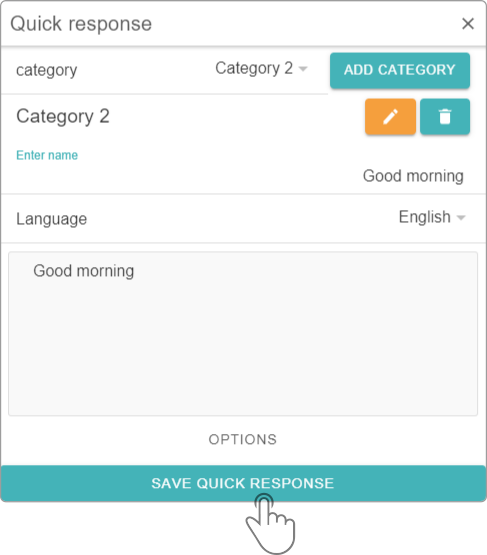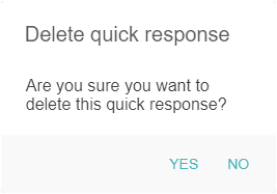Speech
The speech tab has 2 components, specifically the Say and Quick Reponses pages. Tap either of the options at the top of the page to show their components.
By default, the tab Say will be selected.
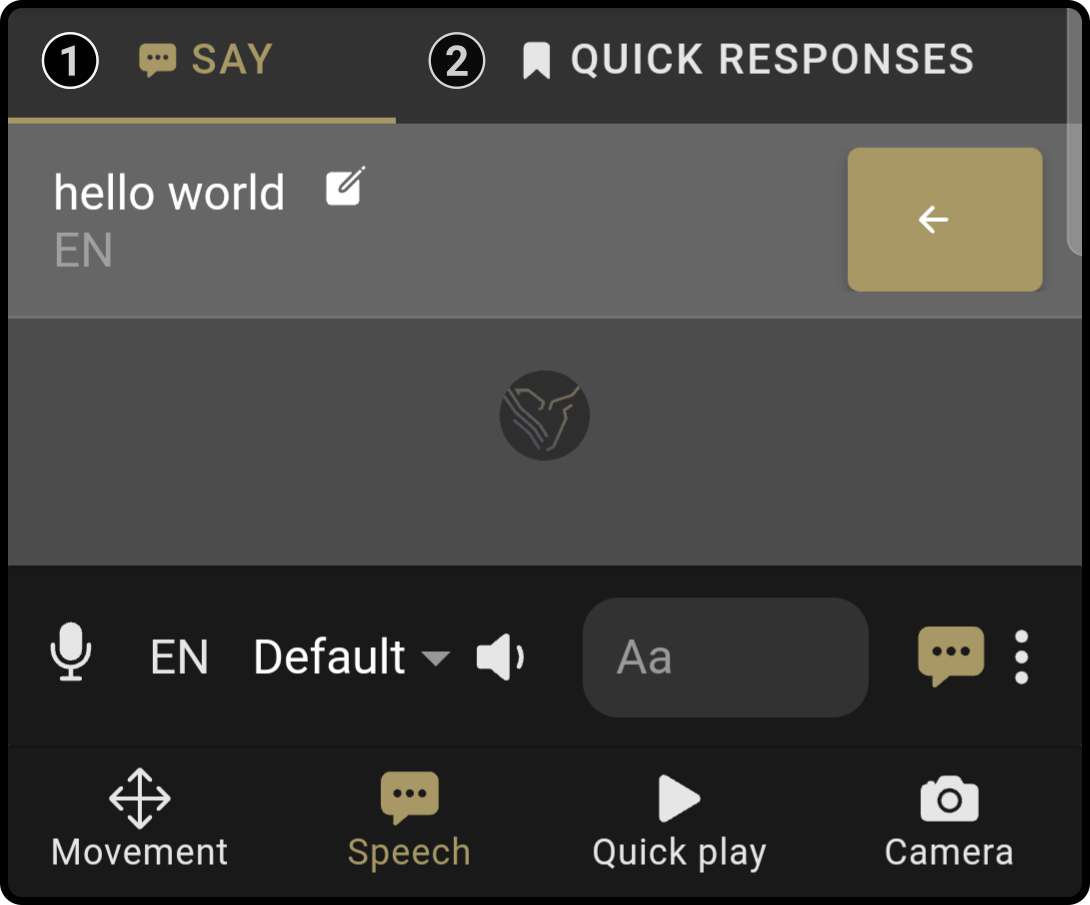
Tap the 'Say' section to:
-
Make the device say something
-
Repeat an earlier message
-
Store or delete earlier messages
Tap the 'Quick Responses' section to:
-
Store a collection of messages
-
Edit the Quick responses
-
Delete the Quick Responses
| The Quick Responses created in the steering page will be shown in the dashboard widget as well. |
Chat
The chat widget can be used to make the device say some text or to make the device respond to a command.

-
A list of the history of sent messages(1).
-
Text and speech options for the new message or command
(1): Commands will not be saved in the chat history.
Overview
| It is highly recommended to set the options for the message before entering the message itself. |
The bar at the bottom displays the options for the message:

-
Tap the icon to use the speech service on the tablet/smartphone to enter the message(1)
-
Set the language of the message
-
Select a voice (2) for the device to say the message
-
Tap the icon to show or hide the options for the message (e.g. volume, speech speed, …)
-
Edit the message or command to send to the device
-
Tap the icon
or
to select whether to send a message or a command (3)
-
Tap the icon to view and edit the advanced options (e.g. Animated speech)
After creating the message with the required settings, tap the icon to send the message or command to the device.
|
(1): Requires Google Assistant to be installed on Android devices |
Using the installed speech service
| Save this step for last. Set the other options for the message first, especially the language. |
Tap the icon to open an overlay of the voice recognition app:

When the modal is shown, state the message for the device to repeat or the voice command for the device to execute:
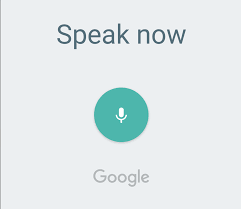
Once the text has been processed by the speech service, the transcribed content will be entered in the message field:

Tap the icon to send the message/command to the device.
| The speech recognition will use the selected language for the message to interpret the speech. Additionally, make sure the requirements for the speech recognition app are met (i.e. access to internet, access to microphone, …). |
|
Set the language for the message
Tap the language field in the message bar to display the language installed on the device:

Tap the language for the message and tap the option 'Accept' to apply the changes:
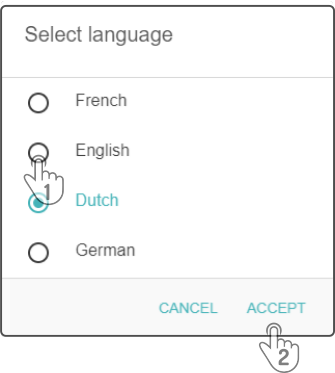
| At least one voice needs to be selected for the language to be shown in the list. |
Set the voice for the message
Tap the voice option next to the language field to display a list of the available voices installed on the connected device:

Tap the voice to be used in the modal and tap the button 'OK' to select the specific voice to be used:
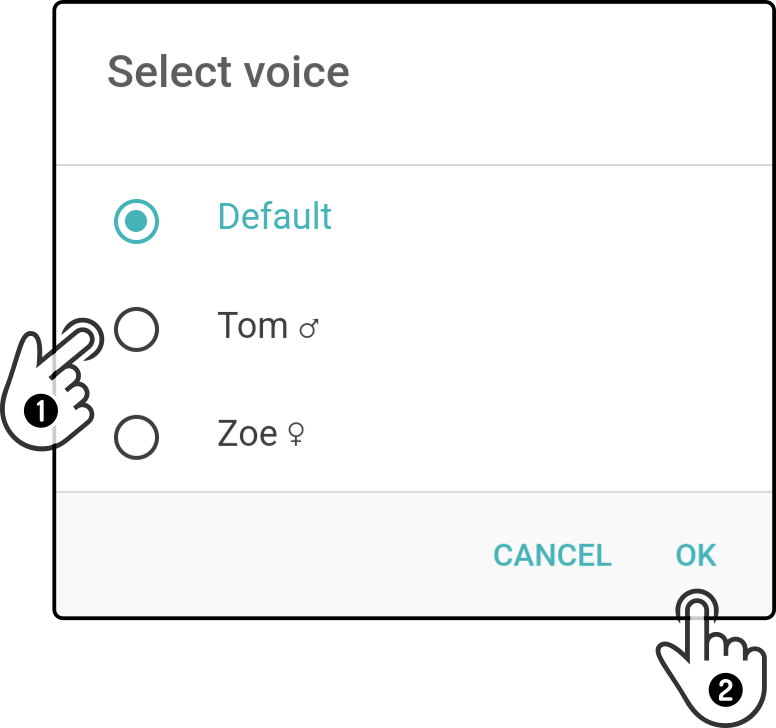
| This option will only be shown if more than one voice for the selected language is installed. |
Setting the options for the speech
Tap the icon to display the options for the message:

Drag the slider(s) for a setting(1) to change the value and tap the icon (2) again to close the options:
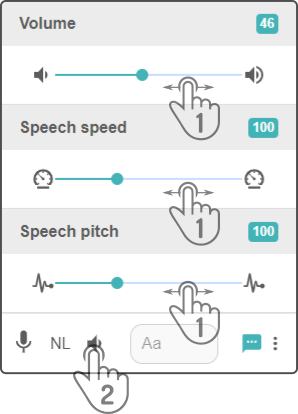
|
Entering the content of the message
| It is highly recommended to set the type of message to send to the device beforehand (i.e. message or command). |
Tap the selected message-field at the bottom of the screen to enter a message or command into the text-field.

Enter the message or command to send to the device:

Tap the (now available) icon to send the message/command to the device.
|
Alternatively, a speech-to-text service can be used to enter the content of the message. See the chapter Using the speech service for more information.
Changing the type of message
| These options will only be shown if the message-field is empty. |
Tap the option (or
) to display the available message-types:

Select the action for the device to take and tap the option 'Accept' to apply the changes.

This will change the icon in the message-bar to match the type of message sent to the device.
| Type | Icon shown | Explanation |
|---|---|---|
Say |
The device will state the entered message using the entered speech-options |
|
Execute |
The device will interpret the sent message as a voice-command |
Execution options
Tap the button to display a list of available animations the device can show.
Animated speech
| Animated speech will only be executed if the connected device supports this option. |
Another option to animate the device while speaking is to enable (or disable) the option 'Animated speech'.

Tap the option 'Animated speech' to enable or disable this option.
Tap outside the shown popup to close the modal.
History of messages
A history of the sent messages (not commands) is available:
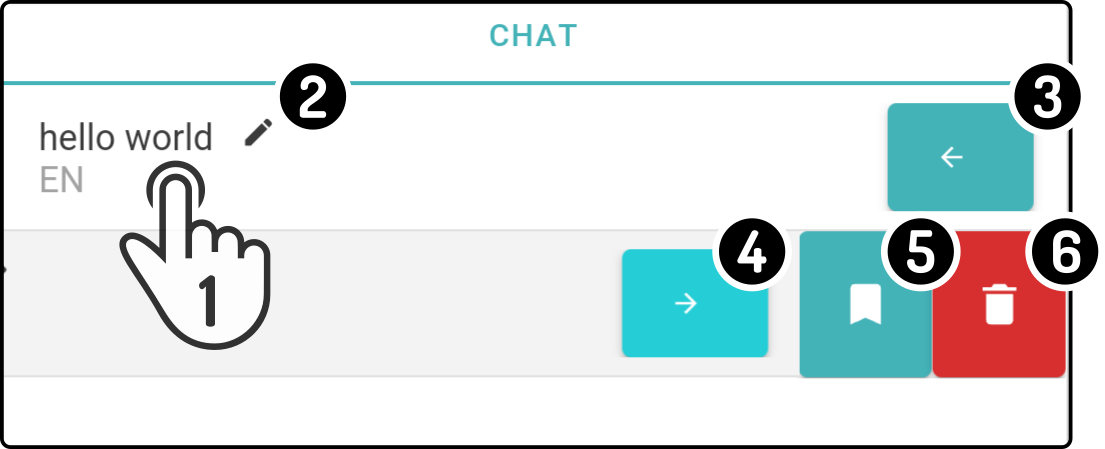
-
Tap the message to have the device repeat the message
-
Tap the icon to edit the message
-
Tap the button to display the options for the message
-
Tap the button to hide the options for the message
-
Tap the button to store the message as a quick response
-
Tap the button to delete the message from the history
Editing a message
Tap the title of the message to edit it:

Enter the new content for the message in the screen and tap outside the modal to stop editing.
Send an earlier message to the device
Tap a message in the history to send it to the device again.

The device will then play it back using the set speech properties (voice pitch, volume, …).
Storing a message as a Quick response
Tap the button (1) to show the message options(2).
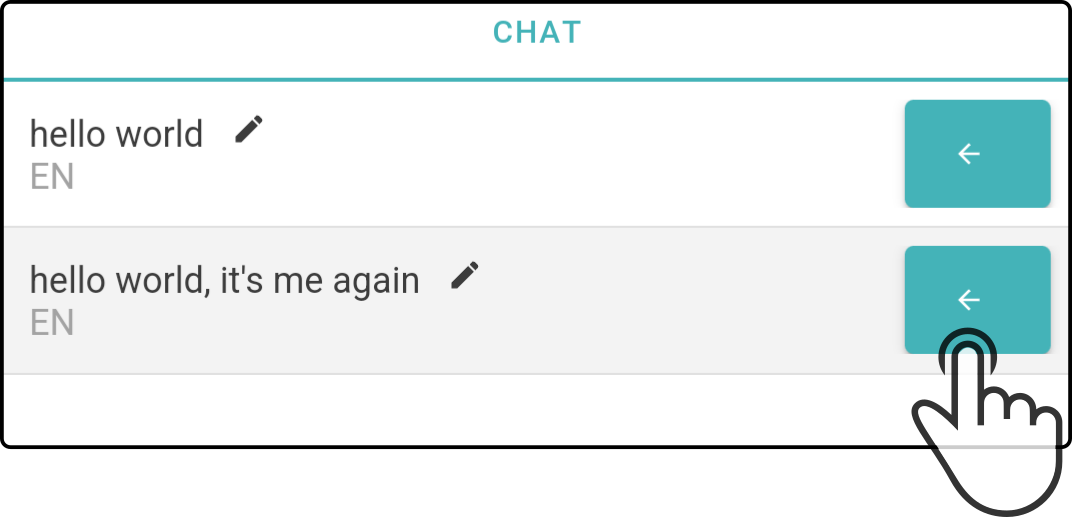
Tap the button to save the message as a Quick Response. For more information on the quick response(s), see the chapter Editing the quick response. The details for the message will be entered automatically, and the category 'Default' will be selected by default.
Tap the button 'Save Quick response' to store the message.
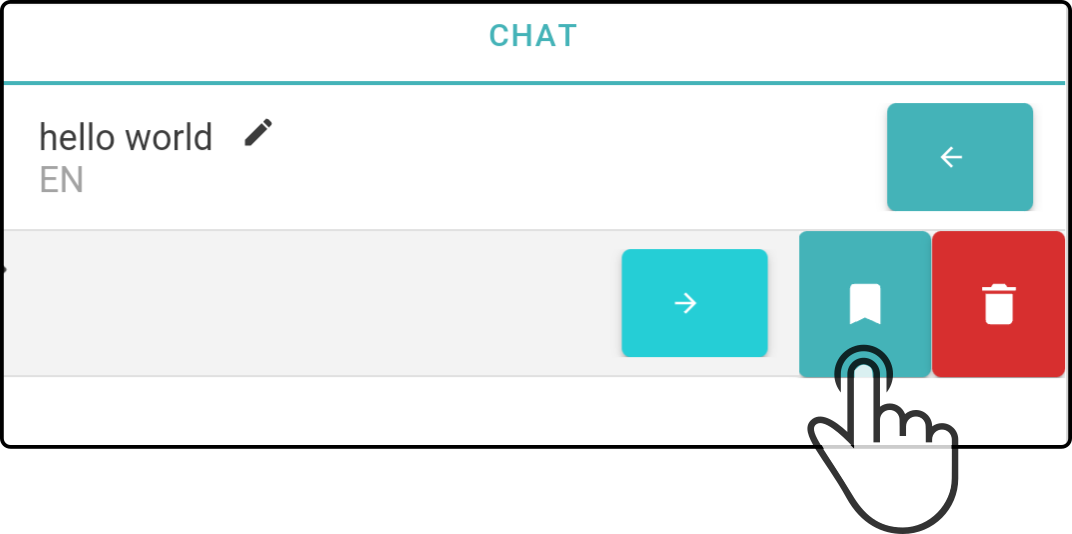
Tap the button (1) to close the message options.
|
(1): Alternatively, swiping left or right can also be used to show or hide the options for the message. |
Delete the message
Tap the button (1) to show the message options(2).

Tap the button to delete the message from the history:
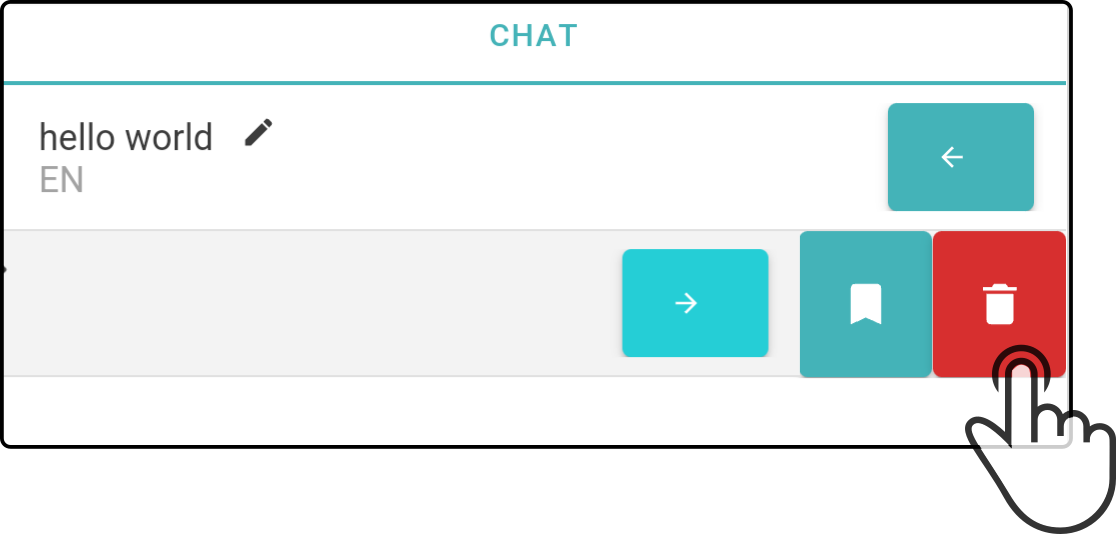
Tap the button (1) to close the message options.
|
(1): Alternatively, swiping left or right can also be used to show or hide the options for the message. |
List of Quick Responses
In this component, the user can play or modify the quick responses that the smart device will say.
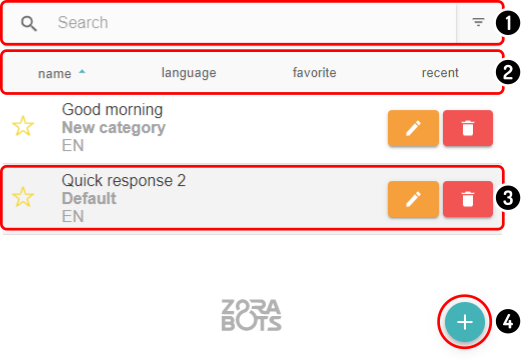
-
Filter the list of responses
-
Sort the list of responses
-
Details of the response
-
Add new response
Filtering the list of responses
The list can be filtered by entering a search-term in the list or applying a filter to the list.

-
Entering a search-term in the field
Enter a search-term in the field (1) to search the list for Quick Responses with the search-term in the name of the Quick Response.
To remove the search-term, tap the icon (2) in the right of the search-field or erase the current searched term.
| The icon will only be shown when editing the search-field. |
-
Filter by category or language
Tap the icon ![]() (3) to display the filter-options for the list:
(3) to display the filter-options for the list:

A modal will be shown with the available options for the filter:
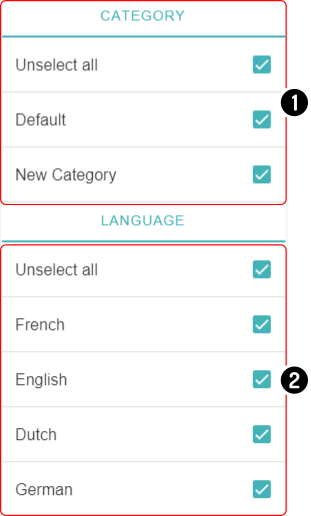
The list can be filtered to show or hide categories(1) or languages(2).
Tap one of the options in the list to toggle the display of the category or tap the button 'Unselect all' to toggle all selected options in the selected section off.
Tap the icon in the top-right of the modal to apply the changes to the list.
|
Sort the list of quick responses
Tap one the shown properties of the quick response (name, language, favorite, recent) to sort the list in ascending or descending order.
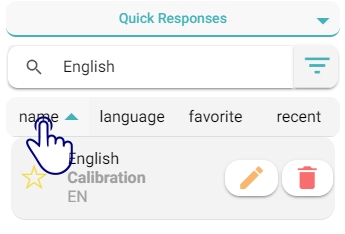
| The sorting will be applied on top of the active search or filter. |
Quick response
For each quick responses, the following operations are available:

-
Mark or unmark a response as favorite
-
Play the selected quick response on the device
-
Edit the quick response
-
Delete the quick response
Marking a Quick Response as a favorite
Tap the next to a Quick Response to (un-)mark them as favorites.

|
|
Play the quick response on the smart device
Tap anywhere in the indicated area (close to the name of the quick response) to play the quick response.

Editing the quick response
Tap the ![]() icon to edit the quick response.
icon to edit the quick response.

This will open a modal with the information of the quick response:
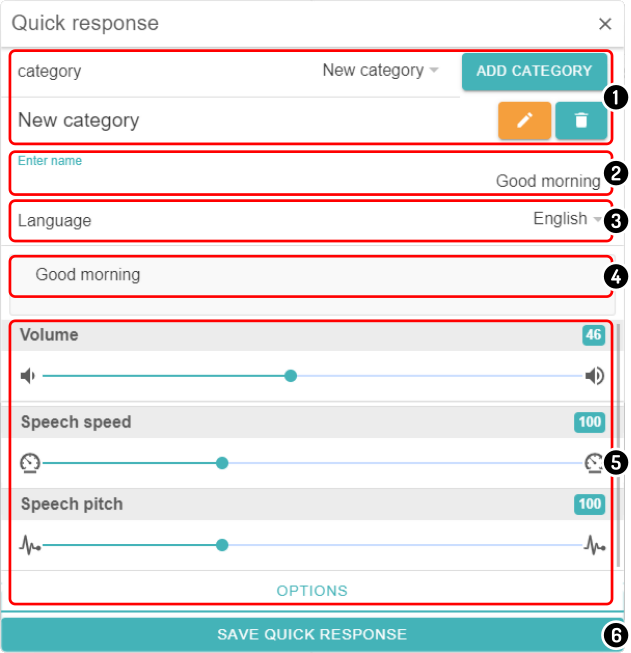
-
The current category for the response
-
The current name for the response
-
The current language for the response
-
The current content for the response
-
The current speech-options
-
Save-button
Editing the category
The category-section contains the following elements:

-
Select a category
-
Create a new category
-
Edit the current category
-
Delete the current category
| The Edit- and Delete-buttons will be disabled for the Default category. |
Selecting a category
Tap the field next to the category to show a list of available categories.

Tap a category from the list and tap the button 'OK' to select the new category.
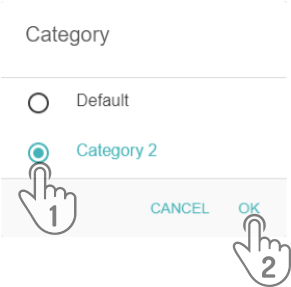
Create a new category
Tap the button Add new category to open a modal asking for the name of the category.

Enter a valid name for the category (1) and tap the Save button (2) to add the new category.
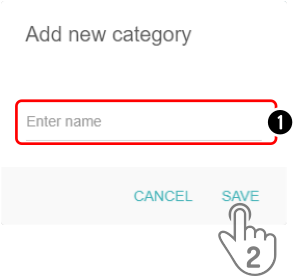
| The new category will automatically be selected. |
Editing a category
| The edit-button will be disabled for the currently selected category. |
Tap the edit-button to open the settings for the category.

Enter a new name for the category (1) and tap the option 'Save' to change the name of the category.
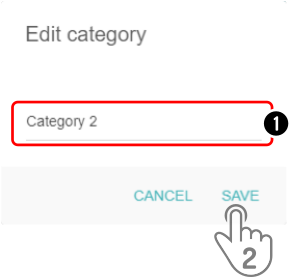
Delete a category
| This will also remove all quick responses belonging to the category. |
| The delete-button will be disabled for the currently selected category. |
Tap the delete-button next to the category to remove the category.

This will show a modal asking to confirm the deletion of the category.
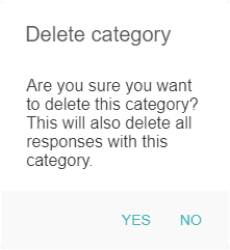
Tap the Yes-button to remove the category and its quick responses.
Setting the name of the response
Tap the name of the response to edit the name of the response.
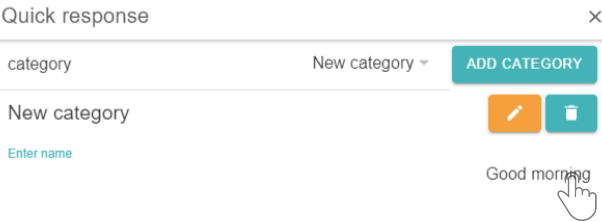
Enter a new name for the response and tap outside the name-field to apply the change.
Setting the language
| ZBOS Control needs to be connected to a device before a language can be selected. |
Tap the language-selection to display a list of the languages installed on the device.

Select the new language in the modal (1) and tap the button OK to set the new language for the quick response.
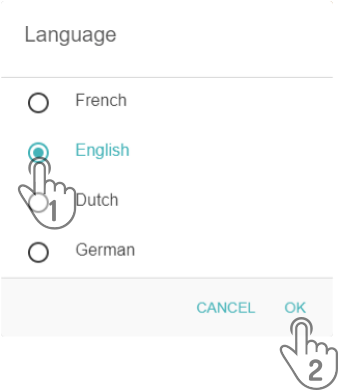
| The current speech-language will automatically be selected when adding a new quick response. |
Setting the content
| The content for the quick response will not be displayed in the list, only the name. |
Tap the content-section to set the content for the quick response.
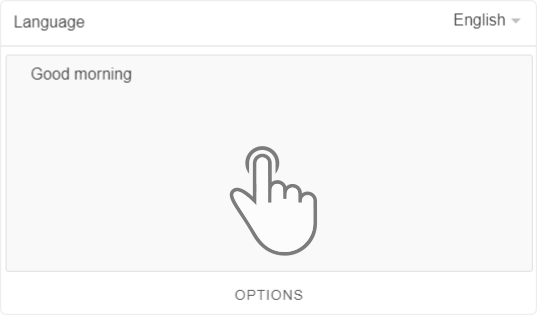
Tap outside the content-modal to save the changes.
Setting the options for the speech
Tap the field 'Options' to display or hide the speech-options for the quick response.
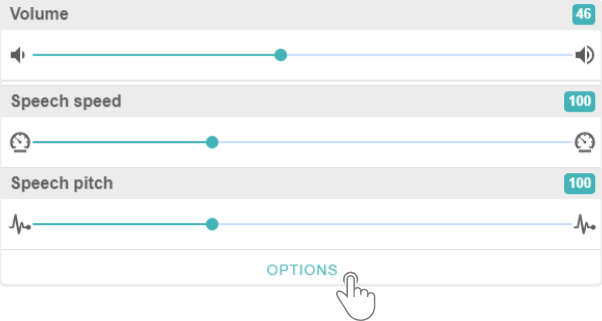
Drag any of the sliders to a new value to change the options for the speech options.
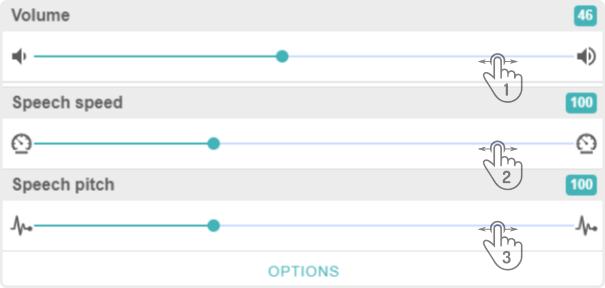
-
Volume (from 0-100)
-
Speech speed (from 50-200)
-
Voice pitch (from 50-200)
| The list of available options depends on the connected device. |
Add a new quick response
Tap the button at the bottom of the quick response-pane to add a new quick response to the list.
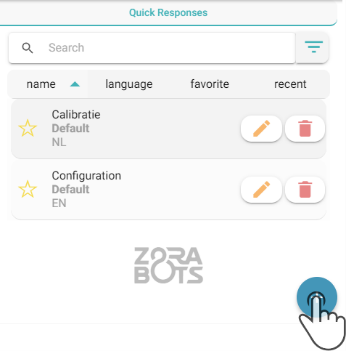
Enter the necessary information for the quick response in the popup. See Editing the quick response for more information on available settings.
| The settings for the language and speech-options will be filled in with the current settings on the device. |

